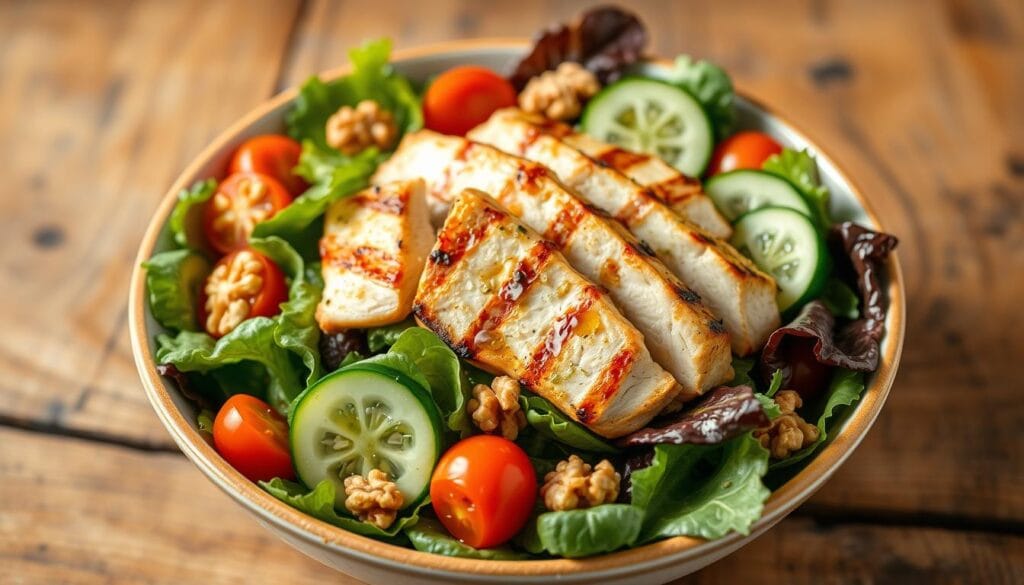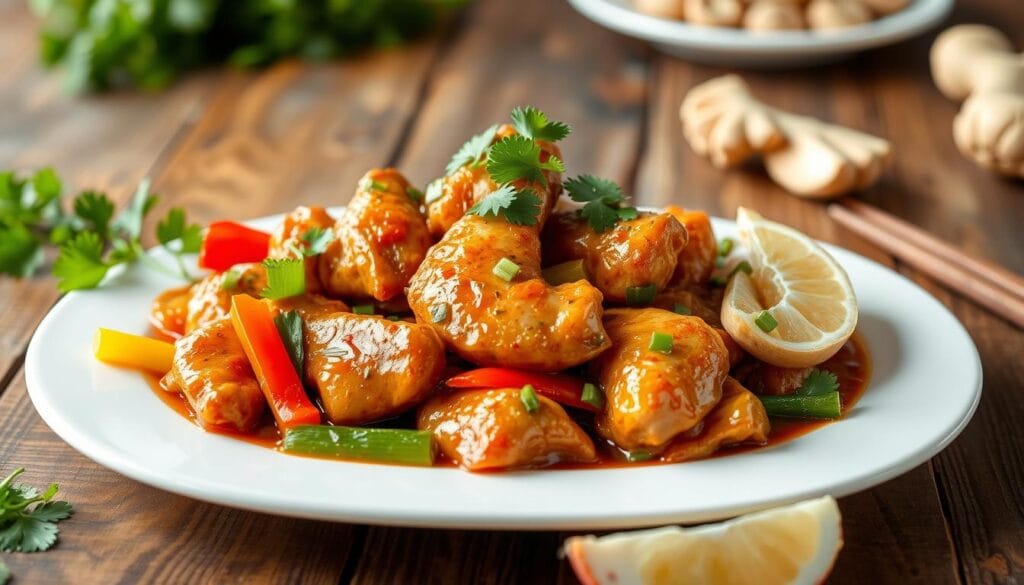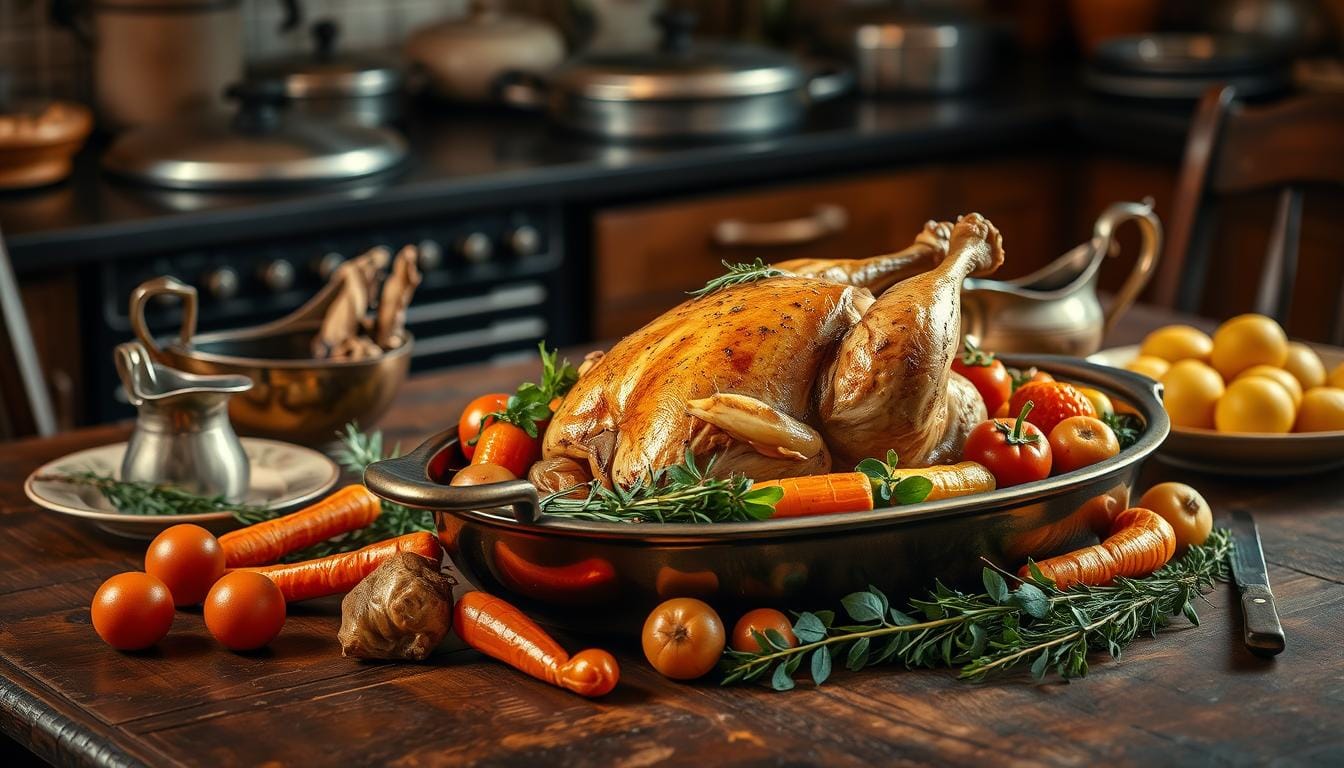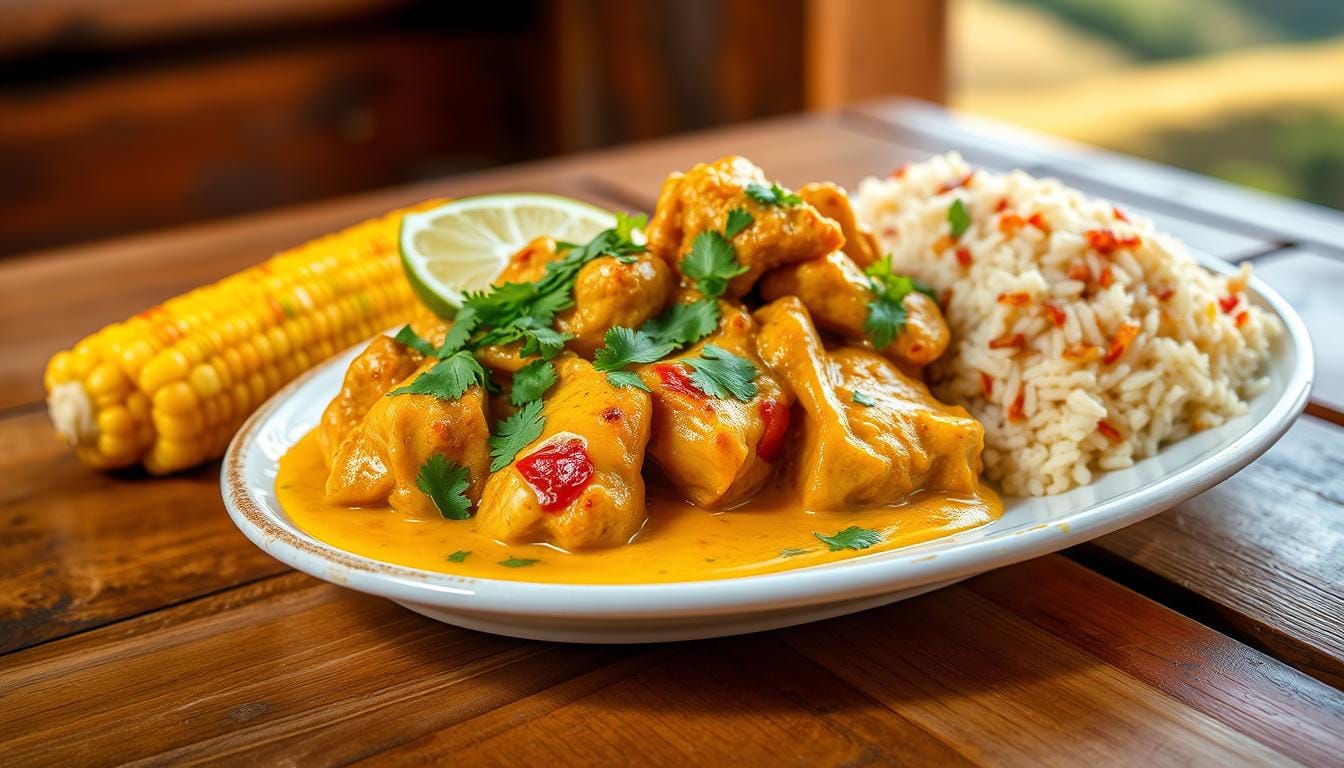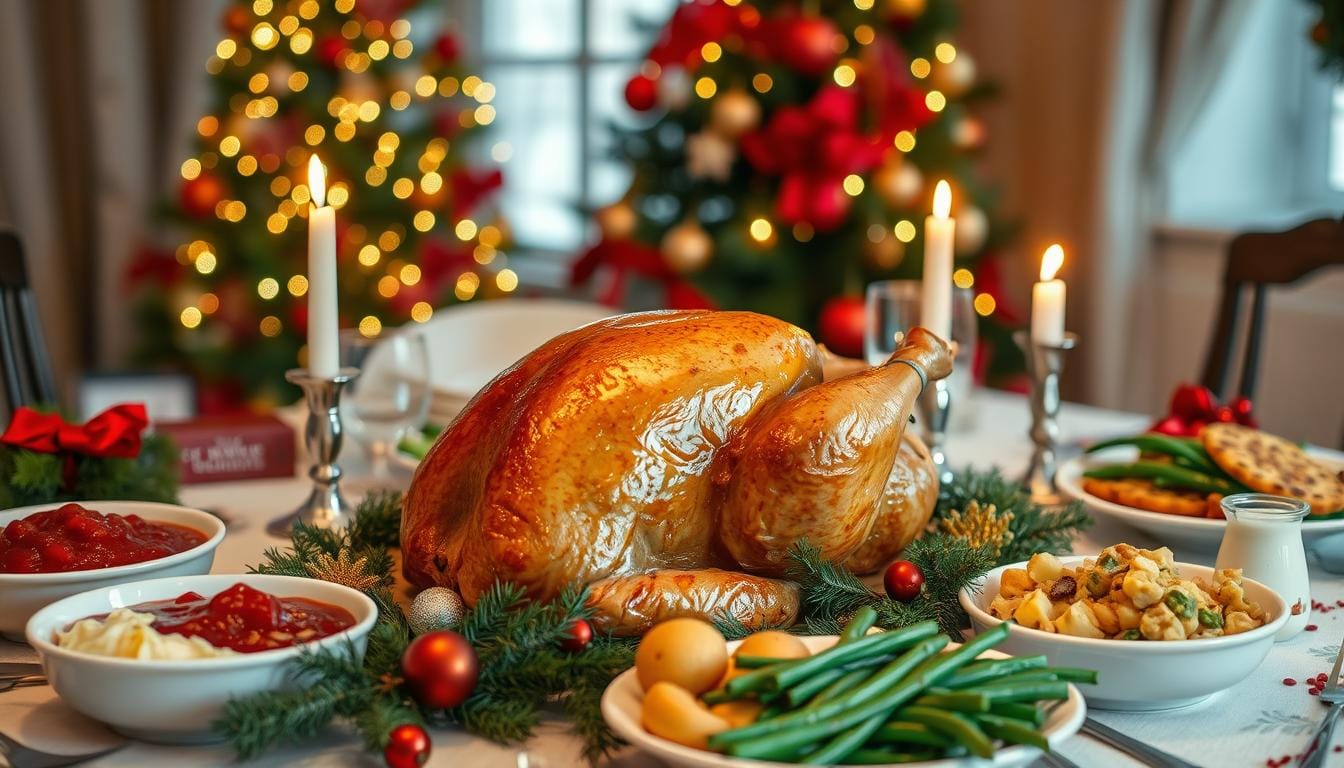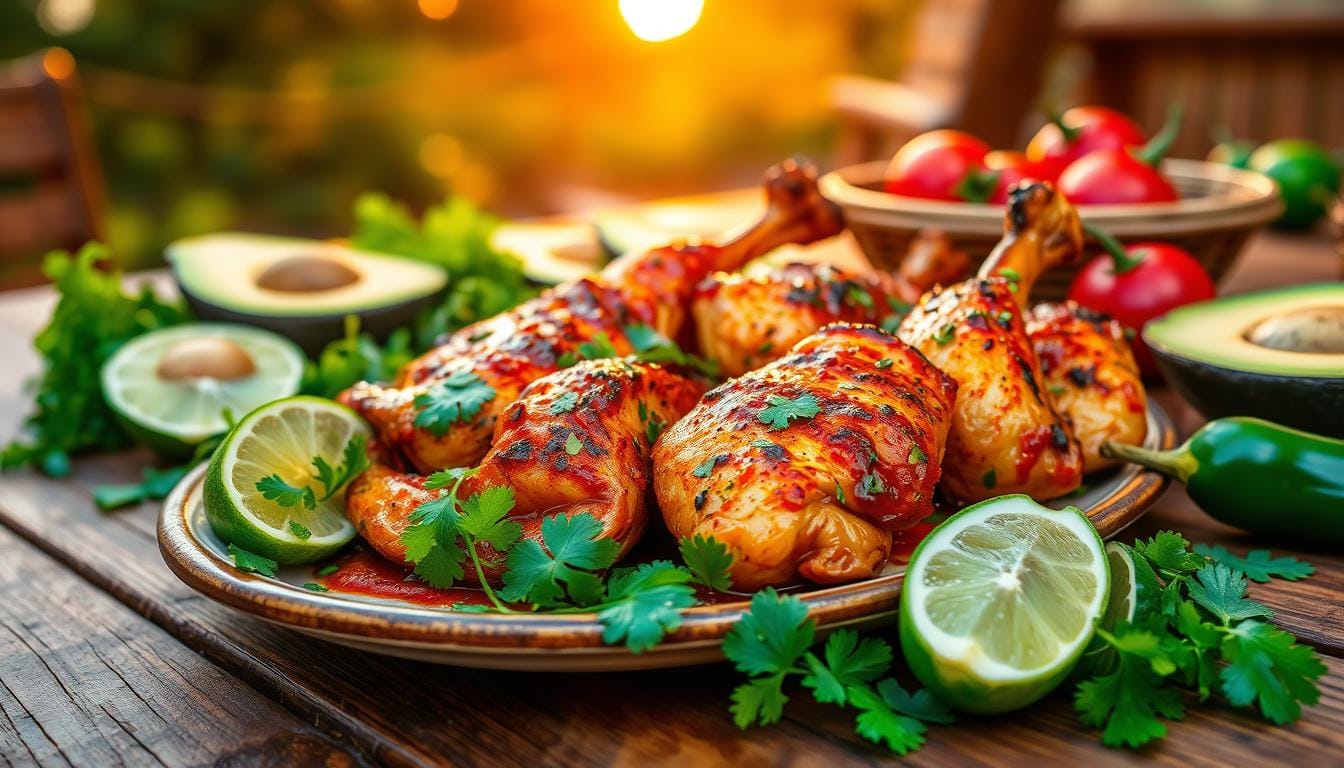Imagine yourself in a quiet, lively street, the evening air filled with the comforting hum of conversation and the irresistible scent of something truly delicious. You’re drawn to a small, unassuming eatery.
Inside, the energy is electric, and a golden plate is placed before you. It’s not just any fried chicken. This is Korean fried chicken. With your first touch, you feel the remarkable crispness of the skin, a thin, almost glass-like shell.

You hear the satisfying crunch as you take a bite, a sound so distinct it feels like a personal greeting. The inside is succulent, tender, and steaming. And then the flavor arrives—a perfect symphony of sweet, salty, and a hint of fiery spice that leaves you wanting more.
This isn’t simply a meal; it’s an emotional connection, a moment of pure culinary delight. This is the experience we’re here to explore today, guiding you through every facet of this beloved dish, from its unique preparation to its place in culture.
The Secret to the Crispy: What Makes Korean Fried Chicken Unique?
If you’ve ever wondered why Korean fried chicken achieves a level of crispness that seems almost impossible, you’re not alone. It’s a texture that stands apart from its American cousin, a delicate, shattering crunch that remains intact even when coated in a sticky glaze. The secret lies in a meticulous and precise process that has been refined over decades.
The cornerstone of this perfection is the double-frying technique. Unlike a single, long fry, Korean fried chicken is immersed in hot oil not once, but twice. The first fry, typically at a lower temperature, cooks the chicken through and begins to render the fat from the skin.

Another key component is the thin, minimal batter. Traditional American fried chicken often uses a thick, heavy flour-based dredge, creating a hearty and substantial crust. Korean fried chicken, however, employs a lighter touch.
You’ll find recipes calling for starches like potato starch or cornstarch, sometimes mixed with a bit of flour, baking powder, and a dash of water. This creates a thin, almost transparent coating that becomes incredibly light and crispy when double-fried. This delicate shell is perfect for absorbing the flavors of the sauce without becoming soggy, preserving that signature crispness.
A Tour of Flavors: Popular Korean Fried Chicken Sauces
The crispy exterior is just one half of the equation; the sauces are what truly define the experience. From spicy and sweet to savory and rich, there is a Korean fried chicken flavor for every palate. The sauce is typically added after the chicken is fried, either by being tossed in a bowl or brushed on.
The Sweet and Fiery: Yangnyeom Chicken
Perhaps the most famous of all Korean fried chicken sauces is Yangnyeom (양념) chicken. It’s the flavor you likely picture when you think of this dish. Its vibrant red color and sticky glaze are an invitation to a world of bold flavor. The sauce is a complex and exhilarating blend, centered on a few essential Korean pantry staples:
- Gochujang: A fermented chili paste that provides a deep, savory, and spicy foundation. Its complexity is unmatched.
- Gochugaru: Korean chili flakes that add a bright, fruity heat without overwhelming the palate.
- Soy Sauce and Garlic: These lend a rich, umami depth that grounds the sauce.
- Honey or Corn Syrup: Crucial for achieving that signature glossy, sticky texture and a balanced sweetness.
The result is a harmonious mix of fiery heat, deep savoriness, and a sticky sweetness that clings to every crevice of the crispy chicken. It’s an unforgettable taste that will have you reaching for the next piece before you’ve even finished the first.
The Savory and Aromatic: Soy Garlic Chicken
For those who prefer a less spicy experience, Soy Garlic chicken is a must-try. This sauce is all about the deep, satisfying flavors of soy and the pungent kick of garlic. The ingredients are simple yet incredibly effective:
- Soy Sauce: The primary flavor, providing a salty, umami-rich base.
- Minced Garlic and Ginger: These aromatics are what make the sauce truly special. They infuse the glaze with a warm, comforting fragrance and a sharp flavor that cuts through the richness of the fried chicken.
- A Touch of Sugar or Honey: This is added to balance the saltiness of the soy sauce and create a beautiful glaze.
This sauce creates a savory, fragrant, and slightly sweet chicken that is just as addictive as its spicy counterpart.
The New Wave of Flavors: Ganjang, Snow Cheese, and More
While Yangnyeom and Soy Garlic are the classics, the world of Korean fried chicken is always evolving. You’ll discover innovative and exciting new flavors that have gained immense popularity:
- Ganjang (Soy) Sauce: A simpler variation of Soy Garlic, focusing more on the clean, pure taste of soy sauce. It is a no-frills, deeply satisfying option that highlights the quality of the chicken itself.
- Snow Cheese Chicken: This is a modern phenomenon, especially popular with a younger crowd. After being fried, the chicken is coated in a powdered mix of various cheeses, garlic, and onion. It’s a savory, salty, and incredibly satisfying option that’s more about a dry seasoning than a sticky sauce.
- Honey Butter Chicken: A sweet and savory delight, this glaze combines the richness of butter with the floral notes of honey, offering a unique and indulgent flavor profile.
Beyond the Plate: The Cultural Significance of Korean Fried Chicken
To truly appreciate Korean fried chicken, you must understand its role in Korean culture. It’s more than just a quick meal; it’s a social ritual, a shared experience, and a symbol of comfort and togetherness.
Chimaek Culture: The Perfect Pairing
You’ve likely heard of “chimaek.” The word is a portmanteau of “chi-ke-n” (chicken) and “maek-ju” (beer). This pairing is an integral part of modern Korean social life. Picture this: a long day at work, a group of friends or colleagues looking to unwind.
There’s no better solution than gathering at a local chicken joint to share a platter of fried chicken and cold, refreshing beer. It’s a symbol of relaxation and camaraderie. This simple tradition has transcended borders, becoming a global phenomenon that you can now find in cities all over the world.
A Journey Through Time: The History of a Global Sensation
The story of Korean fried chicken is one of evolution and adaptation. Its roots can be traced back to the post-Korean War era, when American military presence introduced Western-style fried chicken.
Over time, Korean cooks began to experiment with the technique, adapting it to their own culinary sensibilities. They embraced a lighter batter and the double-frying method, which was also a common technique in Korean cooking for achieving a crispy finish.
Your Guide to Making Authentic Korean Fried Chicken at Home
Ready to bring this culinary experience into your own kitchen? With the right approach, you can create a batch of incredibly crispy and delicious Korean fried chicken right at home. It’s a process that requires patience and attention to detail, but the results are absolutely worth the effort.
Essential Ingredients and Equipment
Before you begin, gather your supplies. Having everything ready will make the process flow smoothly.
- For the Chicken: Use chicken wings, drumettes, or boneless thighs. Make sure the pieces are patted completely dry to ensure a crispy crust.
- For the Batter: You’ll need a mix of potato starch or cornstarch. Some recipes also call for a small amount of all-purpose flour and baking powder for a lighter texture.
- For Frying: A neutral-flavored oil with a high smoke point is best. Canola, peanut, or vegetable oil are excellent choices. You’ll need enough to submerge the chicken pieces.
- For the Sauces: Your ingredients will vary based on the sauce you choose. Make sure you have Gochujang and Gochugaru if you’re making Yangnyeom chicken.
- Essential Equipment:
- A heavy-bottomed pot or deep fryer: This is crucial for maintaining a consistent oil temperature.
- A cooking thermometer: This is your most important tool for ensuring both safety and success. Precise temperature control is key to the double-frying method.
- A wire rack: Essential for draining excess oil and allowing air to circulate, which helps in creating the extra-crispy skin.
Step-by-Step Instructions for the Perfect Fry
The path to perfect crispness is a two-step dance.
- First Fry: Heat your oil to approximately 320°F (160°C). Gently place your floured chicken pieces into the oil, being careful not to overcrowd the pot. Fry for about 10-12 minutes, or until the chicken is cooked through but not yet golden brown. The goal here is to cook the meat and begin the process of rendering the fat.
- Resting Period: Remove the chicken from the oil and let it rest on the wire rack for about 5 minutes. This allows the steam to escape and for the surface to cool and dry, setting the stage for the second fry.
- Second Fry: Increase your oil temperature to around 350°F (175°C). Return the chicken to the hot oil and fry for another 3-5 minutes. This is the final step where the magic happens. The chicken will turn a beautiful golden color, and the skin will transform into that signature, unbelievably crispy texture you’re looking for.
The Art of the Sauce
While the chicken is resting, you can prepare your sauce.
- For Soy Garlic: Combine soy sauce, minced garlic, a bit of grated ginger, and a small amount of sugar or honey in a saucepan. Bring to a simmer and cook until the sauce thickens slightly into a light glaze.
- For Yangnyeom: Mix gochujang, gochugaru, soy sauce, minced garlic, rice vinegar, and a bit of corn syrup or honey. Simmer the mixture for a few minutes until it thickens and becomes a sticky glaze.
Coating and Serving
This is the final, rewarding step. You have two main options:
- Tossing: Place the hot, double-fried chicken in a large bowl. Pour your sauce over the top and gently toss until every piece is evenly coated. This method ensures a beautiful, all-over glaze.
- Brushing: For a lighter application, you can simply brush the sauce onto each piece of chicken with a pastry brush.
Serve your delicious creation immediately, and don’t forget the traditional side of pickled radishes!
FAQ: Your Korean Fried Chicken Questions Answered
- What is the primary difference between Korean fried chicken and American fried chicken?
- The most significant difference lies in the technique. Korean fried chicken is double-fried, resulting in a lighter, thinner, and much crisper skin. American fried chicken often uses a single fry and a thicker flour-based batter, creating a heavier, heartier crust.
- Is it possible to make crispy Korean fried chicken without a deep fryer?
- Absolutely. A heavy-bottomed pot or a Dutch oven on your stovetop works perfectly. The key is to use a cooking thermometer to carefully monitor and maintain the oil temperature for both frying stages.
- What should I serve with my homemade Korean fried chicken?
- To complete the experience, serve your chicken with traditional pickled radishes (치킨무, chikin-mu). Their tangy, refreshing flavor is the perfect counterpoint to the rich, savory chicken. A cold beer is also a classic companion. You can also serve it with a side of steamed rice or a simple coleslaw.
Conclusion: A Culinary Journey You Won’t Forget
From its unique preparation to its place at the heart of Korean social gatherings, Korean fried chicken is a dish with a story. It’s a culinary experience that goes beyond mere nourishment, offering a chance to savor incredible textures and flavors.
Your journey to understanding and making this dish is a rewarding one, promising moments of personal satisfaction and shared joy.
Now that you’re armed with the knowledge of its history, the secrets to its remarkable crispness, and a guide to making it in your own kitchen, we encourage you to try it for yourself.
Head to your local Korean market for the key ingredients, or simply gather the basics and start your own culinary experiment. Your taste buds will thank you for it, and you’ll have a new favorite dish to share with the people you love. Go ahead, make that first crispy, unforgettable bite.
